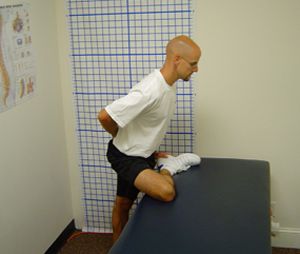Seventy percent of responders have said they sustained some type of on-the-job pain and injury in the past six months that they did not report. Folks, a 70 percent unreported injury rate is one of the main reasons why the cycle of pain-injury-rehab-injury-disability keeps on rolling. We ignore our symptoms.
A few months ago, I taught a class at a Midwest department that serviced a small city, and had very nice facilities with a modern fleet. During the class, I noticed a seasoned responder limping as we practiced.
Upon questioning he mentioned he has had a foot problem for the past five years that had gotten progressively worse, and a surgery was scheduled in two weeks. This dedicated responder had been ignoring and dealing with the pain for five years. Oh, and by the way, foot and ankle issues changes how you move; his back has also been injured for the past two years.
Movement matters
There are specific biomechanical patterns that are inherent to a career in EMS. Squatting, kneeling, prolonged time on your knees, ascending and descending stairs, prolonged bending and navigating uneven terrain are just some of those patterns. And, obviously, you do all this while carrying bags, monitors and people.
When there is a segment in your body that does not move properly, the joints and tissue above and below that joint are forced to take additional load and strain. This not only further damages the immobile joint, but puts the supporting proximal or distal joints on the fast track to pain and injury.
Since there are some predictable moments in our mostly unpredictable jobs, we can focus on common patterns ─ what we call injury drivers ─ and change them.
Tip 1: Put your best foot forward
It all starts from the ground. The foot and ankle are arguably the most important part of the body. Any alterations in foot and ankle mobility can directly affect everything above.
So the next time you’re picking up gear, a spine board or a cot, try to keep your heels down. Also, keep your feet shoulder-width apart, which allows you to generate more power.
Our injured responder made the mistake of lifting spine boards and patients with one foot turned out at a 45-degree angle, and the heel of the other foot two inches off the ground. He would do the entire lift off of his left toes and right low back.
What if you cannot keep your heels down or correctly position your feet? Passive stretching, foam rolling and mobilizations are good ways to train and condition your tissue to work properly.
Tip 2: Stay hip
The majority of your power comes from your hips. Without strong hips and glutes, you will use your back. We commonly see two pain issues from the hips: tight and weak. When your hips are tight, or when one hip is tight, it causes all kinds of nasty patterns.
Tightness causes the power muscles to fire at the wrong time, or not at all. Tightness on one side causes a lot of torque on the joint and spine - torque that is not supposed to be there, which will damage the tissue.
Weakness in one (usually the tight side) or both hips means that you will use your back to lift, no matter how much you think you are not. You are using it for everything you do.
The solution again is to go back to your stretching and foam rolling toolbox. The hips, due to their size and complexity, may be best served with a few good sports or neuromuscular massages, and can benefit from simple exercises involving a tennis ball.
The bottom line is that we have to move better to do our job safely. And the only way to achieve that goal is to invest in yourself.
 The stretch pictured on the left addresses hip mobility issues. Find a table and attempt to do the stretch as shown. Keep your back flat and head up; you will quickly know which is the tighter and weaker side. If both sides are loose, focus on strength and power development.
The stretch pictured on the left addresses hip mobility issues. Find a table and attempt to do the stretch as shown. Keep your back flat and head up; you will quickly know which is the tighter and weaker side. If both sides are loose, focus on strength and power development.
After taking the seasoned Midwestern paramedic through the passive stretches, foam rolling and then active stretching, he went from limping in pain to hopping around the bay with a smile.
His pain of five years was gone, and last I heard he had cancelled the surgery.













